The last time I saw Stephanie was on my last trip to Australia and New Zealand just a few years ago, when she with her mum and youngest brother came to see me at Melbourne airport between flights I was taking. We had a lovely time together though it was far too brief. So it was wonderful when Steph emailed me a few months ago and said “We’re coming to see you!” Then all of a sudden the time had flown and they were here. It was just unfortunate that the weather had decided to be wet, cold and generally pretty miserable.
I wanted to show them a bit of the Borders region, so wrapping up well we set off one day to St Mary’s Loch and the inn called Tibbie Shiels. It was not, I repeat NOT, a day for photos, but if you want to see some superb photos of the loch click here! It took its name from the church of St Mary that used to stand nearby, but today only the old graveyard is left. Tibbie Shiels was the original landlady of the small cottage inn. It has been added to over the years but the original cottage is still the main building. You can read Tibbie’s story in a nutshell here. There are some more great photos of the loch there too if you explore the site further.

This was the only photo I took. That’s Tibbie’s over the wall, but I was fascinated by what had been done to the old tree root! It has been planted with saxifrage. Beautiful!
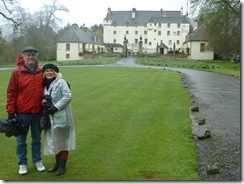
We came back up the road again to visit Traquair House, but instead of doing the tour round the house, they opted for just the walks round the grounds. On a fine day that’s great, but it wasn’t so brilliant in the rain! 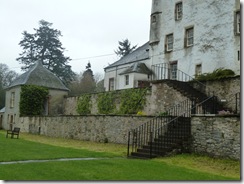 However, we saw the maze - from the outside, just opposite the back of the house and then came across some friendly but not very photogenic kune kune pigs!
However, we saw the maze - from the outside, just opposite the back of the house and then came across some friendly but not very photogenic kune kune pigs!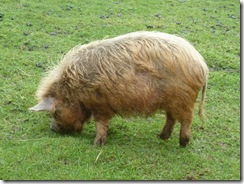
Poor things, they’re not very beautiful, but they are rather appealing!
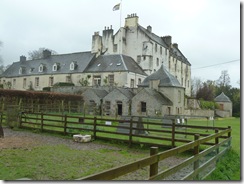 I didn’t quite catch it – photographically speaking - in the pen in this photo as it began to run over to see if we had brought any food! That little lump, bottom left, was as much as I caught, I think!
I didn’t quite catch it – photographically speaking - in the pen in this photo as it began to run over to see if we had brought any food! That little lump, bottom left, was as much as I caught, I think!
Some of the little buildings in the grounds, probably once the estate workers’ workshops, are now little craft workshops. The guy in here made all sorts of stuff from driftwood. 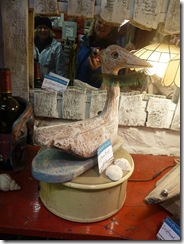 I loved the driftwood duck with a peacock feather in its beak, but didn’t realise that I was reflected in the mirror behind it!!
I loved the driftwood duck with a peacock feather in its beak, but didn’t realise that I was reflected in the mirror behind it!!
After a visit to the house shop and a tasting session of Traquair ales - ale’s not my bag – we carried on down the road to Melrose, to look at the Abbey, and have a cup of tea. 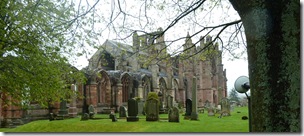
And here’s where I get on my high horse…we went looking for somewhere for tea and a cake, but all the teashops in Melrose were either just closing or already closed! 4.30 in the afternoon, just when people are finishing their afternoon activities and looking for a cup of tea and a sit down – and all the ******* tea shops have already closed! Oh it does raise my blood pressure. We eventually did get a cuppie and a muffin in the Station Hotel, in the bar.
The next day I sent them off up to Edinburgh with lots of suggestions as to what to do and see, but the weather again was just so awful that they managed to walk the length of the Royal Mile, from the Castle to Holyrood before making the decision to come home again. I didn’t blame them. However the next day we planned on going to Queensferry to let them see the Forth Bridge, so I took them on a tour around Arthur Seat, the extinct volcano in the centre of Edinburgh. 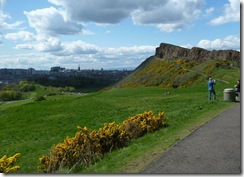 The road winds round the hill offering views in every direction, but the best view is the one across Salisbury Crags, an ancient quarry, to the castle and the centre of town ---but I’m getting ahead of myself here!
The road winds round the hill offering views in every direction, but the best view is the one across Salisbury Crags, an ancient quarry, to the castle and the centre of town ---but I’m getting ahead of myself here!
Before we reached Edinburgh we visited Roslin Chapel, which I am sure readers of Dan Brown’s da Vinci Code will recognise the name of if nothing else. 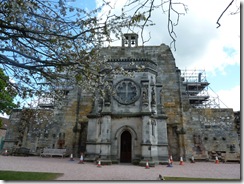 I was interested to see that the metal “cover” that was erected a good number of years ago to protect the building from the elements, and which I thought was to be permanent, had gone. It was interesting to go up the steps and walk round the walkway at roof level where lots of normally unseen building detail could be spotted. Can’t do that now however, as they seem to have dried out the building now and are doing an ongoing rescue of the stonework. It is now no longer permitted to take photos inside the chapel, but I’m sure they didn’t mind that I took a photo of William, the chapel cat!
I was interested to see that the metal “cover” that was erected a good number of years ago to protect the building from the elements, and which I thought was to be permanent, had gone. It was interesting to go up the steps and walk round the walkway at roof level where lots of normally unseen building detail could be spotted. Can’t do that now however, as they seem to have dried out the building now and are doing an ongoing rescue of the stonework. It is now no longer permitted to take photos inside the chapel, but I’m sure they didn’t mind that I took a photo of William, the chapel cat! 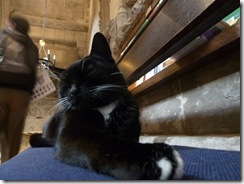 He doesn’t belong there but comes every day. Strange I’ve never seen him before, as he’s been going there for the last ten years apparently! Anyway to see pictures of the chapel, click here for the official chapel website and here for loads of photos. It is stunning – a Bible in stone, they say – and has such a history to it.
He doesn’t belong there but comes every day. Strange I’ve never seen him before, as he’s been going there for the last ten years apparently! Anyway to see pictures of the chapel, click here for the official chapel website and here for loads of photos. It is stunning – a Bible in stone, they say – and has such a history to it.
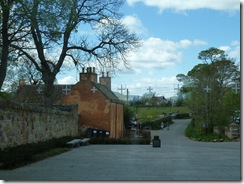
I like to think of this old house being the one mentioned in the da Vinci Code, next door to the chapel.
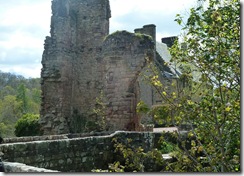
We did a bit of a walk around the chapel and on to the ruined castle, which has been some size in its day. Only bits of it remain standing but from the positions of the bits you can tell it’s been pretty huge, and high too, emerging as it does out of the valley. The bridge there, the entrance to the castle is pretty high above the valley floor. You can see, behind the ruin, a slate-roofed building. This is the home of the Earl of Rosslyn of the St Clair family when they come to Scotland. The present earl, the 7th one, is actually in the London Metropolitan Police Force. 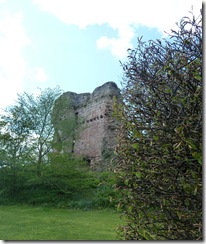
Here’s another bit of the ruined castle.
So, on we went up to Edinburgh as I said a minute or two ago. 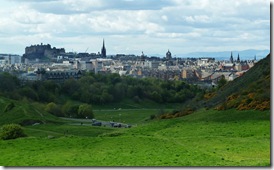
Zooming in you can see on the skyline, the castle on the left, then the old Highland Kirk (church), the spire being the highest point of the city. A green domed building is probably the Usher Hall, a lovely concert hall. while the tall crown topped church is the High Kirk of St. Giles, that most people call St Giles Cathedral. There are loads of pictures of the Kirk here.
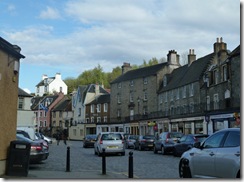 Next stop South Queensferry, named for Queen Margaret of Scotland in the 11th century. It’s an interesting and ancient little town, with views of the two bridges that now cross the Firth of Forth. One is the famous railway bridge and the other the over-used road bridge. We may find ourselves with a third Forth Bridge soon.
Next stop South Queensferry, named for Queen Margaret of Scotland in the 11th century. It’s an interesting and ancient little town, with views of the two bridges that now cross the Firth of Forth. One is the famous railway bridge and the other the over-used road bridge. We may find ourselves with a third Forth Bridge soon.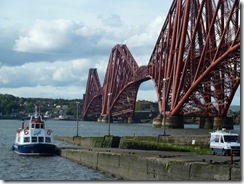
When I was a child the road bridge had not been thought of and a ferry transported vehicles and passengers from one side of the Forth to the other. It came in to South Queensferry at this jetty, a much larger boat than the one in this photo. This one takes tourists out for sails around the islands of the Forth. The bridge was completed in 1890 and has carried trains across the river ever since. It even featured in the film The 39 steps – the original one, in 1935.
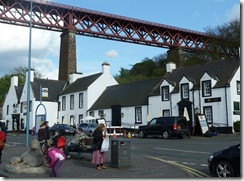
The approach to the bridge on the south side of the river almost stands right over the top of the 17th century Hawes Inn. Sir Walter Scott and Robert Louis Stevenson each mentioned the Inn in one of their novels.
So with the time moving on and a date with my friends Morag and Mike at a restaurant back in Peebles looming we continued on our way back home.
There are just so many places I’d like to have shown Stephanie and Steven, but three days just wasn’t enough. Next time… we kept saying! Next time!
Talk again soon.
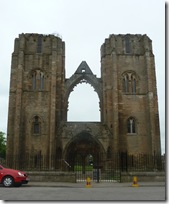 I drove out of Inverness eastwards, through Nairn and Elgin (cathedral, left); past Baxter’s canning factory at Fochabers, (FOCHA-bers) and turned onto the Buckie road, passing it and Findochty – Fin ECH ti to the locals; past Hillhead cemetery where there is a stone memorial to my great grandfather, his siblings and parents, and on down to Portknockie,
I drove out of Inverness eastwards, through Nairn and Elgin (cathedral, left); past Baxter’s canning factory at Fochabers, (FOCHA-bers) and turned onto the Buckie road, passing it and Findochty – Fin ECH ti to the locals; past Hillhead cemetery where there is a stone memorial to my great grandfather, his siblings and parents, and on down to Portknockie, 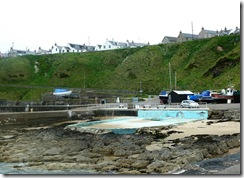 quite a large fishing town with the typical narrow vennels running down towards the sea. The town stands mainly at the top of a cliff with the harbour down below. In the days when my ancestors lived in PTK, its local name - probably from the registration letters of local fishing boats - there were no street names. You might live at 3, 87, 168 or 202 Portknockie , or any one of the numbered houses. What I want to find out is what streets the ancestors’ houses were in. To hopefully get that information I have written an email to the local heritage group. (P.S. Received a reply today, so all’s clear).
quite a large fishing town with the typical narrow vennels running down towards the sea. The town stands mainly at the top of a cliff with the harbour down below. In the days when my ancestors lived in PTK, its local name - probably from the registration letters of local fishing boats - there were no street names. You might live at 3, 87, 168 or 202 Portknockie , or any one of the numbered houses. What I want to find out is what streets the ancestors’ houses were in. To hopefully get that information I have written an email to the local heritage group. (P.S. Received a reply today, so all’s clear). 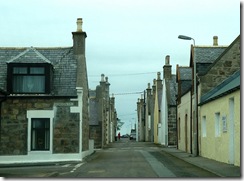 I drove around the village, taking photos, and generally exploring.
I drove around the village, taking photos, and generally exploring.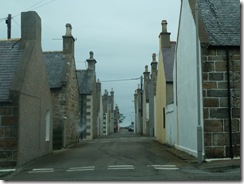
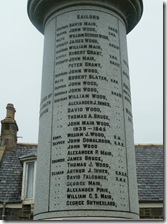 I was interested to see many of my family’s surnames were listed among the sailors… Wood, Mair, Slater…. In contrast, the list of soldiers had very few of these names.
I was interested to see many of my family’s surnames were listed among the sailors… Wood, Mair, Slater…. In contrast, the list of soldiers had very few of these names. 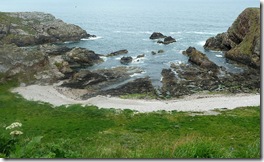 Above the rocky shoreline I found a plaque giving the names of the rocks and caves in the photo on the left.
Above the rocky shoreline I found a plaque giving the names of the rocks and caves in the photo on the left. 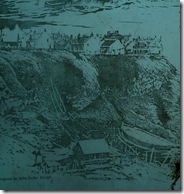
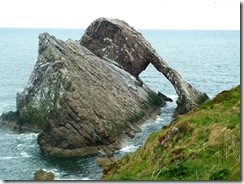
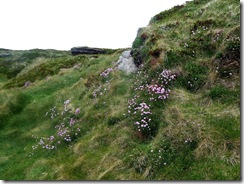
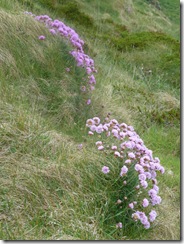
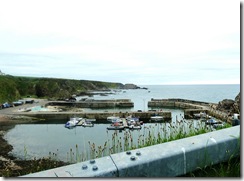 So, after that exhilarating walk, I came back to the car to drive down the steep twisting road to the harbour. The paddling pool in the outer harbour must be popular in the summer , although it didn’t look as if it was likely to be under water even at high tide.
So, after that exhilarating walk, I came back to the car to drive down the steep twisting road to the harbour. The paddling pool in the outer harbour must be popular in the summer , although it didn’t look as if it was likely to be under water even at high tide. 


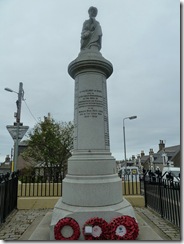
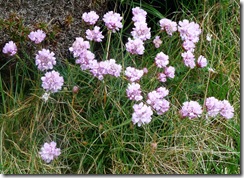


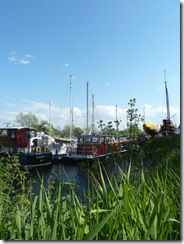
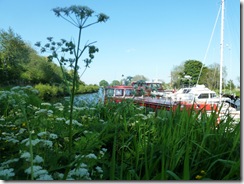
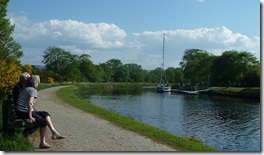
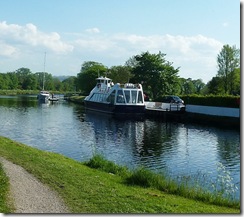
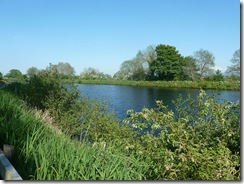
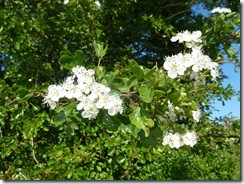
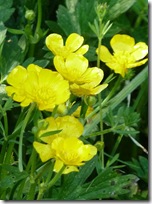
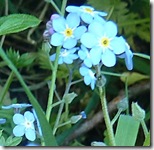
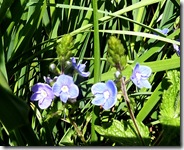
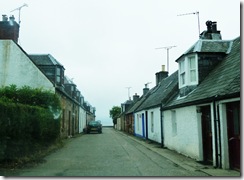


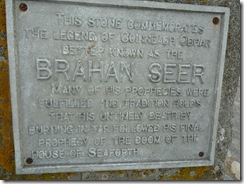
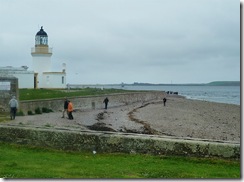


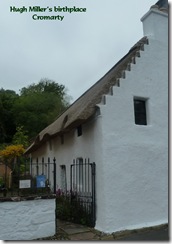

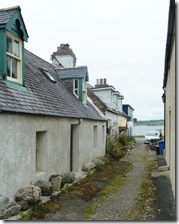
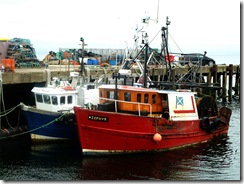
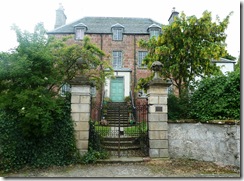
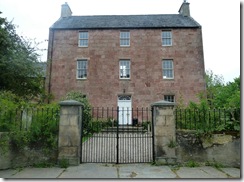

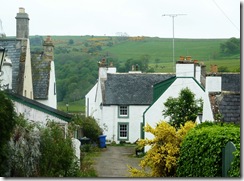
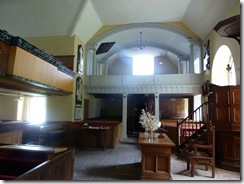

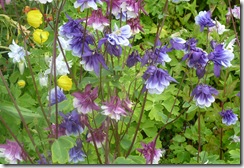
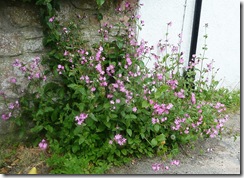
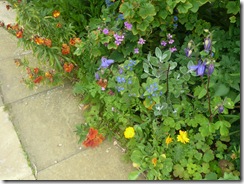
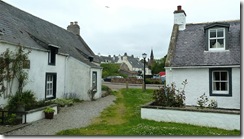




 I didn’t quite catch it – photographically speaking - in the pen in this photo as it began to run over to see if we had brought any food! That little lump, bottom left, was as much as I caught, I think!
I didn’t quite catch it – photographically speaking - in the pen in this photo as it began to run over to see if we had brought any food! That little lump, bottom left, was as much as I caught, I think!











